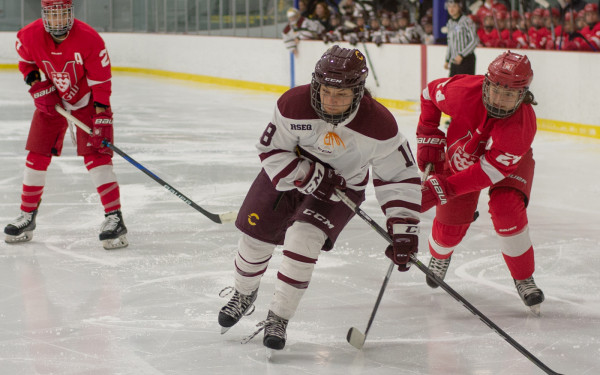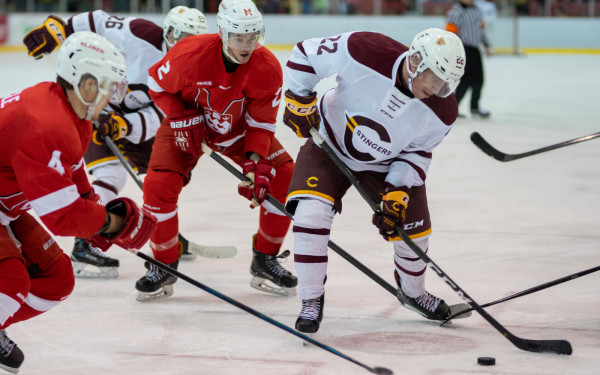Breaking Barriers: Hockey in First Nations Communities
For First Nations Hockey Players, Getting to the Next Level Means Leaving Home
Off Montreal’s Route 138, tucked into the corner of the Mohawk community of Kahnawake, there’s a small arena.
It’s your standard once-homey-but-now-outdated rink. However, for kids on the territory, this is the only way to get access to local organized hockey.
Opened in 1987, the Kahnawake Sports Complex is the sole rink in the community. With that comes certain limitations and few opportunities for advancement in the world of hockey.
“In our association, we have limited funding and limited ice, so we can only help the kids get so far,” said Lou Ann Stacey, director of bantam and midget levels of hockey in Kahnawake. “If they have the skill and the talent, we recommend that the parents find alternatives [outside Kahnawake].”
Bantam and midget levels—which occupy the ages of 13-14 and 15-17 respectively—are arguably the two most important age groups with regards to a player’s growth.
Playing well and getting noticed at those levels could mean opportunities further down the road.
Leaving the Community
Stacey—who has been involved with the community’s hockey program for nearly 40 years—has worked with a number of funding options, including Hockey Canada.
However, it still has not helped the hockey program get to the next level, which is consistent double-letter hockey.
Double letters means not only higher quality hockey, but also the introduction of body checking and more advanced tactics. Another factor that puts additional stress on the program’s growth is the economic situation that most families in Kahnawake are living in.
“We were able to get a skills camp done here with Hockey Canada and were able to get support for clinics from local businesses,” said Stacey. “But at the end of the day, some families might be able to give their kids three four, five thousand dollars to play double letters. That’s rarely the case from families in the community.”
Hockey has become a year-round sport that demands offseason training from a young age. Those looking to either make a career out of it or play the best hockey they can have to commit to playing a winter sport for 12 months.
Not only does that demand a massive time commitment, but a financial one as well. The cost of playing hockey is increasing and shows no sign of stopping.
“As an association, we have a lot of people from the community involved. We have people help out the best they can,” added Stacey. “We have had players find success in the double-letter system but there are many who have tried and many who have not [succeeded].”
One of the people that has found success is Brooke Stacey, who plays for the Buffalo Beauts in the National Women’s Hockey League. After starting her hockey career in Kahnawake, her talent meant that she had to quickly look elsewhere to continue her career.
“I played in Kahnawake until I was eight years old. Maybe nine,” said Brooke. “I played with boys and an age group higher and then I went to Châteauguay to play double letters over there.”
It’s not uncommon for talented players to make that jump to Châteauguay hockey. Given that both hockey programs are on Montreal’s South Shore, it is the most accessible double letter hockey program for kids from Kahnawake.
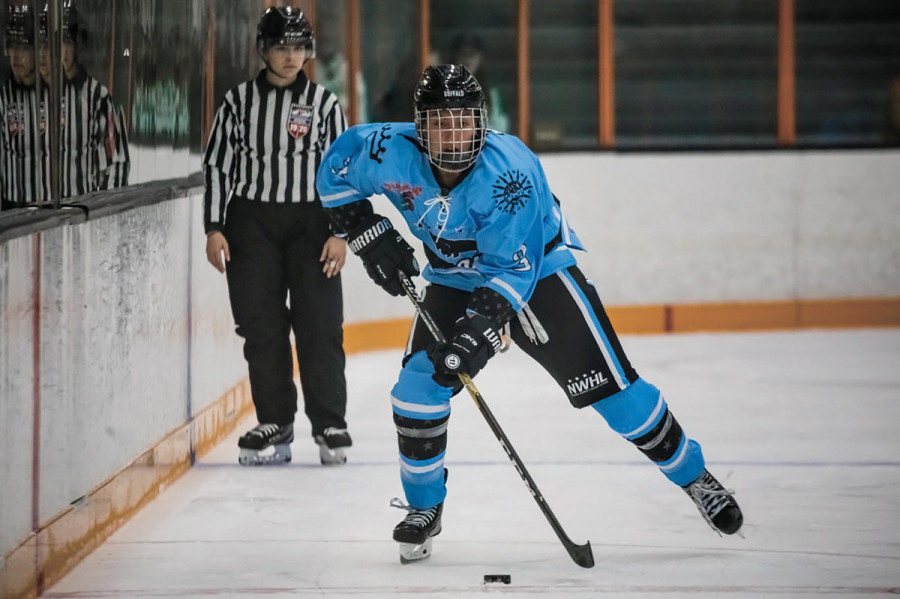
While it does offer better opportunities and resources, players from the community are not immune to growing pains and often have an adjustment period before settling in.
“The biggest difference was the language at the beginning. Everyone there spoke French and so it was kind of funny at the beginning,” said Brooke. “They would try and speak English, and I would do my best to learn French.”
After competing in Châteauguay, Stacey found her way into prep school hockey at the Ontario Hockey Academy and followed that up by playing for the University of Maine.
While the trajectory made sense for her, even leading to a spot on the U-18 national team, making the decision to leave the community is not always the easiest decision for Indigenous athletes.
“Sometimes people don’t want to leave the reservation, and I get it. It’s a massive sacrifice to leave your family and your community,” said Brooke. “For me, it was never in doubt. This is what I wanted to do with my life and it’s something I want to do, so these were necessary sacrifices. It also helped that I was only an hour away [from the OHA.]”
It’s an unfortunate reality for a lot of the talented players in Kahnawake. They have to look elsewhere and—while the physical distance isn’t necessarily a significant factor for most of them—some
First Nations communities are not as close and have to make massive sacrifices.
“I’ve been to communities up north where I helped run hockey camps, and they have to travel like an hour for the nearest team to play against,” said Brooke. “A lot of the time they end up playing amongst themselves.”
“Talent was being wasted in Kahnawake so I was like ‘I’ll see if I can make it.’ I loved playing there but I knew I could’ve done more and it just wasn’t as competitive anymore.”
— Reece Glover-Kirby
Second Fiddle To Lacrosse
With high-level hockey in Kahnawake not being a possibility with the current state of their resources, the main issue boils down to one thing: accessibility.
Between the middle of April and the end of August, the ice is taken out of the arena to make way for lacrosse, Kahnawake’s main sport.
It’s no secret that lacrosse holds a special place in the hearts of most of North America’s First Nations, the Iroquois men’s national lacrosse team has won the silver medal at this year’s Lacrosse World Championships in Langley, British Columbia.
The Kahnawake Sports Complex even hosted the President’s Cup, the National Championship for Senior B indoor lacrosse, which drew massive crowds and brought Indigenous teams from all over Canada.
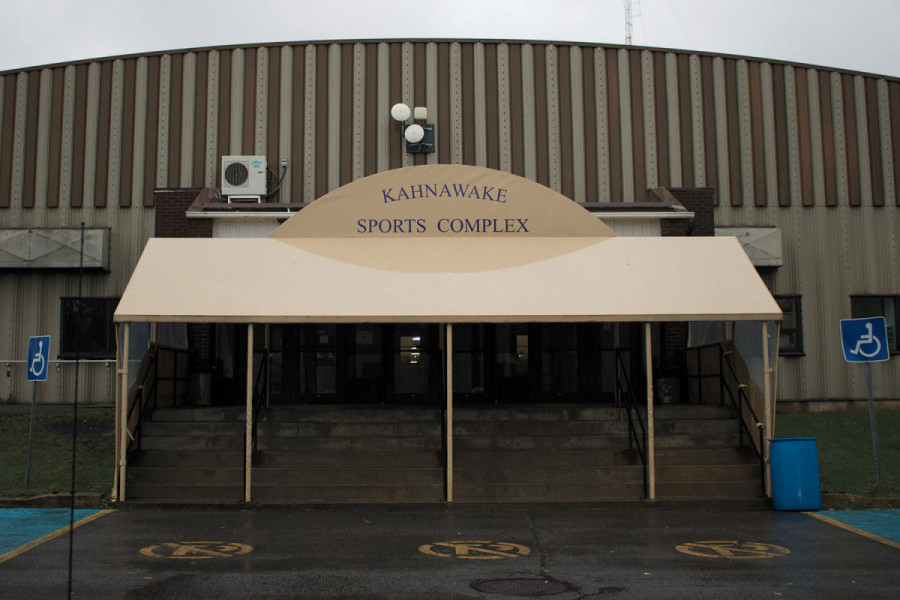
At the tournament, the local Kahnawake Mohawks finished in third at home and picked up the bronze medal.
“The community loves its lacrosse, and it’s something we take a lot of pride in,” said Lou Ann. “The President’s Cup was a really big success, and it’s still a massive part of the community.”
All that attention to lacrosse over the summer means that hockey gets put on the backburner for a couple of months, which does not help the hockey program grow.
“Lacrosse is the main sport of Kahnawake and like a tradition around here,” said Reece Glover-Kirby, a defenceman for the Midget AAA Chateauguay Grenadiers. “There are outdoor rinks and stuff if you want to keep on playing, but having a second rink is definitely the way everyone’s going to get better.”
Where Do We Go From Here
Given that getting to a higher echelon of hockey now requires year-round training, this puts a massive dent into an already scarce practice schedule.
“You see all the other people, they get different resources like camps. We only get like two practices a week, so it’s not always easy,” said Glover-Kirby. “It’s to be expected though, when all these age groups and all these levels have one sheet of ice to share.”
Glover-Kirby played most of his life in Kahnawake and made the massive jump from local Bantam A hockey to Bantam AAA—a transition that is extremely rare, due to the fact that the contact at the AAA level takes a while to get used to.
“Talent was being wasted in Kahnawake, so I was like ‘I’ll see if I can make it,’” said Glover-Kirby. “I loved playing there, but I knew I could’ve done more and it just wasn’t as competitive anymore.”
Glover-Kirby maintains that while his technical talent was well harnessed and developed in single-letter hockey, his understanding of the game and his acclimatization to the physicality of contact hockey was stalled.
However, this was to be expected. Much like Brooke, there was a language barrier that needed to be crossed first.
The only difference is that Glover-Kirby didn’t grow up in francophone hockey culture and instead had to learn on the fly and at the highest level in his age category.
“I was getting sat for most of the games and couldn’t understand my coaches. I felt like a minority in [the dressing room],” said Glover-Kirby. “There was a lot to get used to, and it finally started getting better when I played my own game, but it was tough at the start.”
While he ended up settling in and becoming one of the most relied upon players on the team, Glover-Kirby said that the lack of resources hurts the chances of other kids to achieve more success in the higher levels of hockey.
“If you look at Châteauguay, the difference is crazy,” added Glover-Kirby. “They have three arenas and they have a bunch of resources that we just don’t have, and it shows how good some of the players are and the development they get.”
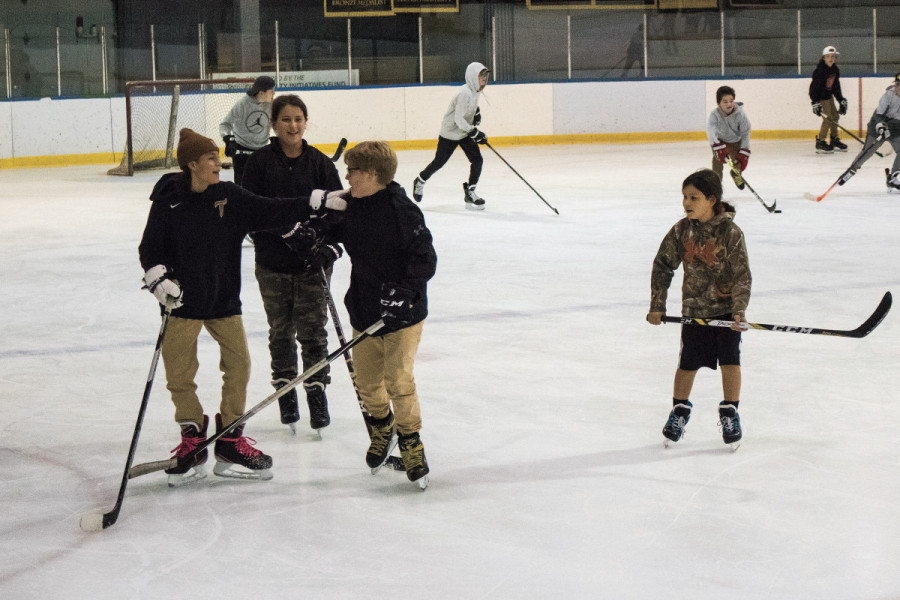
Glover-Kirby went on to elaborate on how there were plans to build a second sports complex in the community and finally get the chance to grow the Kahnawake hockey program further, but funding has always been an issue and it continues to be the case.
The second complex was going to be more financially sustainable and would also be able to produce energy for other services in the community.
A far cry from the rink’s current roughly $10,000 hydro bill.
“There weren’t too many places where we could get funding. You get a grant here, you get a grant there, but it’s not enough to have the money outright to build it,” said Lou Ann. “The usage of both spaces wouldn’t be a problem at all, but the money to just get the project started wasn’t there.”
While small upgrades have been made on the infrastructure of the Kahnawake Sports Complex, it still remains very much an arena with technology from the 1980s.
“Lacrosse benefits from [a second sports complex] too. We’re a community that loves their sports and being able to get better at both is something we all want to see,” said Lou Ann. “Not only is this a good thing for the hockey program but the community as a whole.”

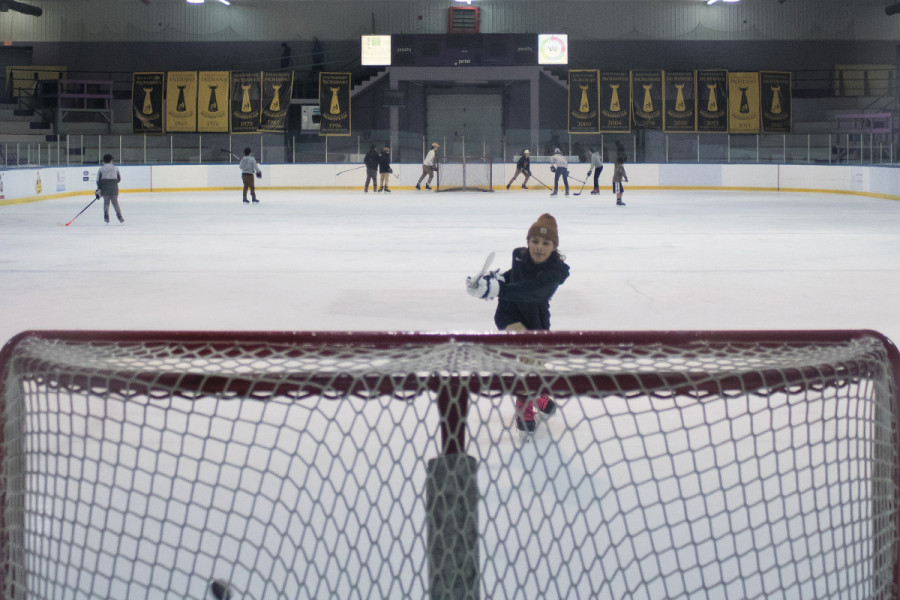
_600_832_s.png)

web_600_375_90_s_c1.jpg)
4_600_375_90_s_c1.jpg)
